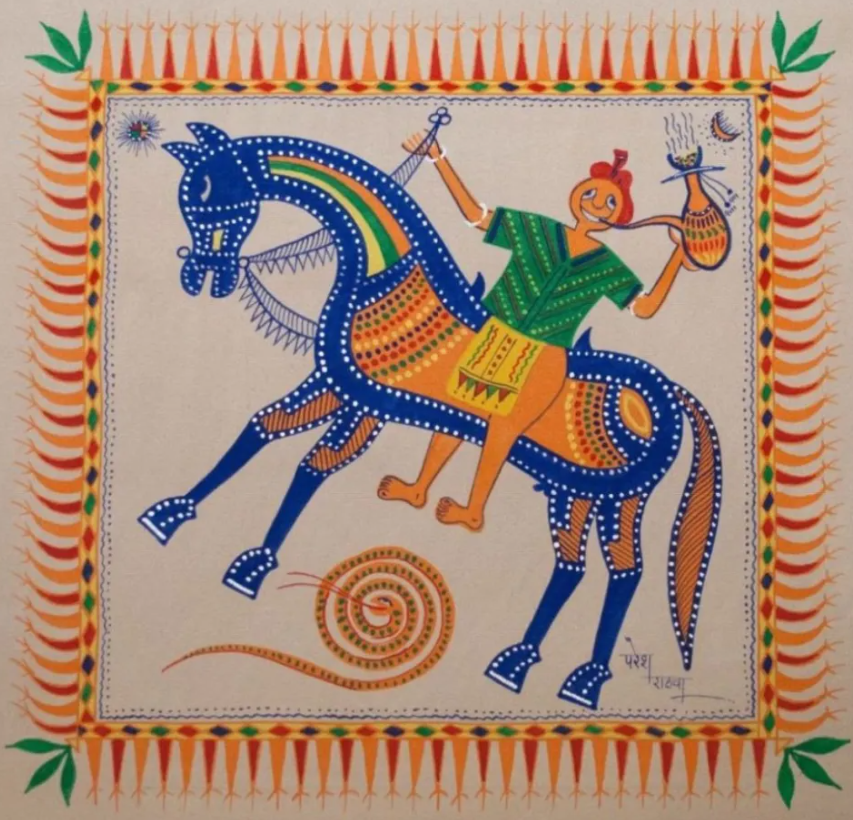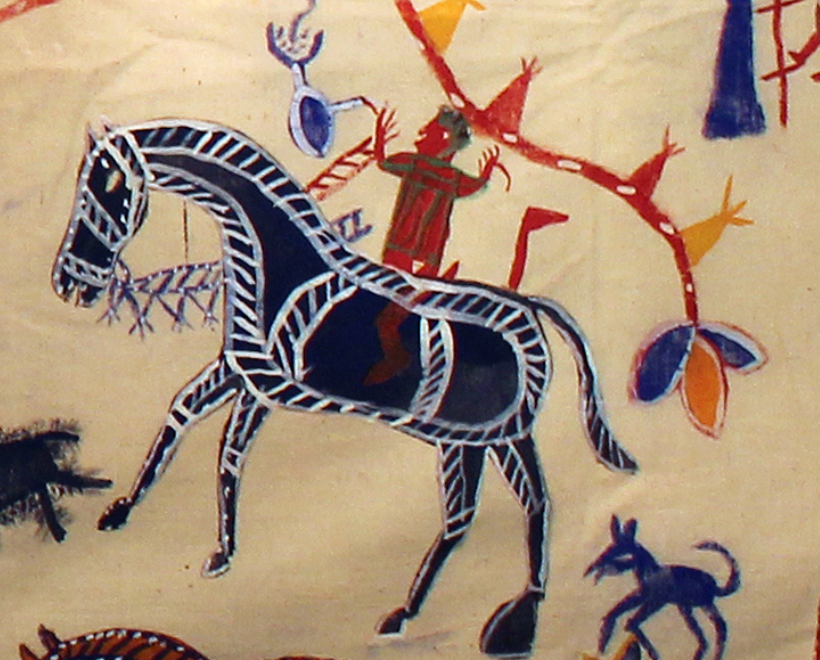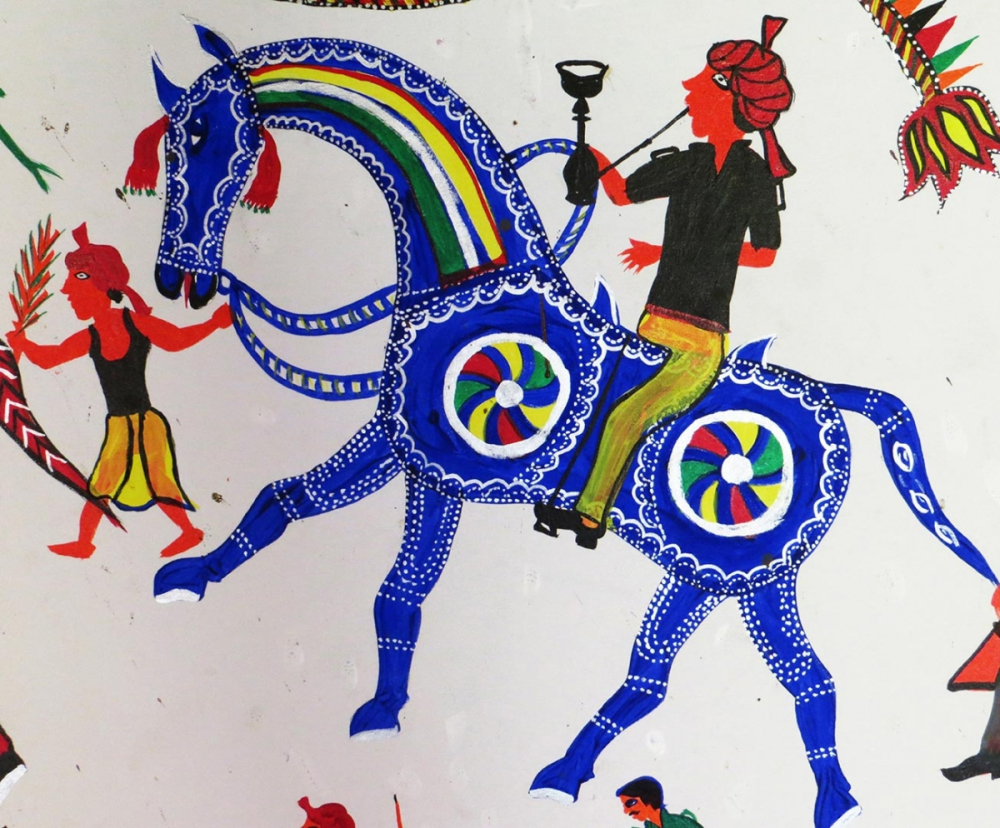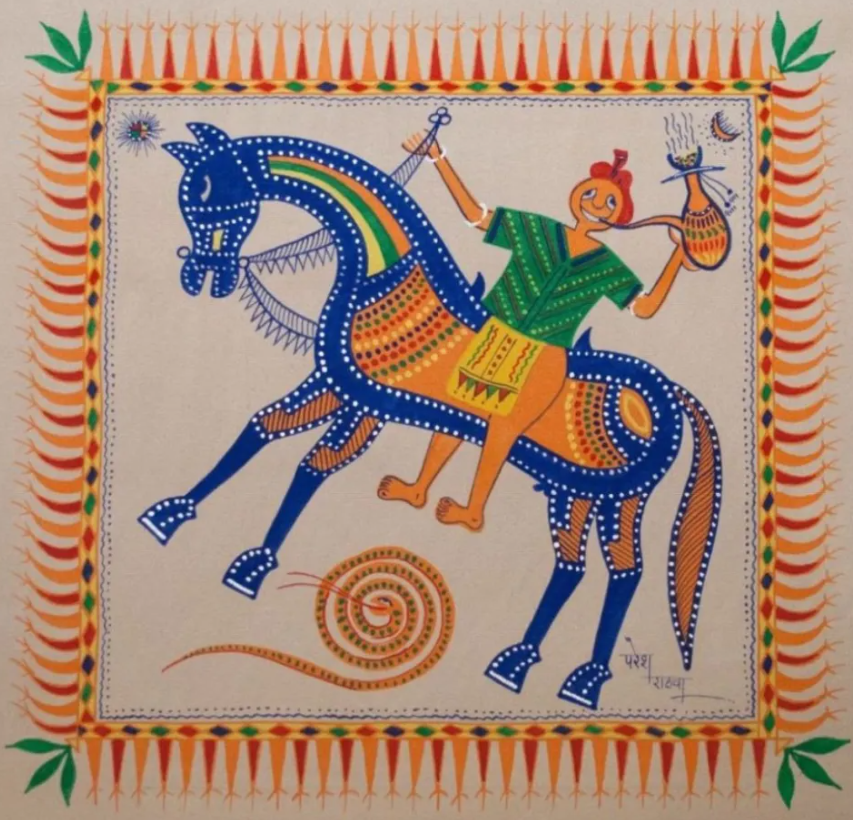
tribal paintings
Symbolism in The Baba Ganeh , gujarat

The Baba Ganeh motif epitomizes wisdom and initiation, one which keeps the past alive. Through its mythology and folklores around Pithora, Baba Ganeh stands for eliminating obstacles, quite like Lord Ganesha. His presence in the artwork thus ensures that ceremonies receive divine blessings. It incorporates nature, animal, and community life, the viewpoint of the Rathwa tribe. This Baba Ganeh motif forms an essential part of the Pithora paintings ritualistic art of the Rathwa tribe in the state of Gujarat. Besides being related to tradition and culture of the community, these paintings definitely pray for the recognition of deities, on whom they rely for prosperity and harmony.

Baba Ganeh is usually sketched blue and seen holding a hookah as a mark of homage and fatherly excellence. This is often placed first in the narrative. The making of Pithora paintings is done upon the mud-walls, which have cow dung and chalk application in a process called Lipna. The Baba Ganeh and all others colored deities have their representations in natural pigments. The pictures are mostly made by skilled male artists called, Lakhara. The unmarried females do the basing work for it. The detailed depiction of Baba Ganeh is important to honor him in his divine role.

The depiction of Baba Ganeh serves as a ceremonial starting point for rituals. His folk songs narrate a story with reference to his role in making divine gatherings successful. According to the Pithora custom, rituals begin with invoking Baba Ganeh to sanctify the rite since he is the embodiment of spiritual connection with ancestry and nature. Baba Ganeh is uniquely identifiable by his alien blue hue, elephantine trunk, and hookah in hand that reflect a fatherly aura. His place in Pithora paintings inspires respect by positioning him on the right-hand side. Surrounding motifs would often include vibrant representations of animals, celestial beings, and daily life, showcasing the rich and vibrant fabric of the Rathwa tribe-at-large.


